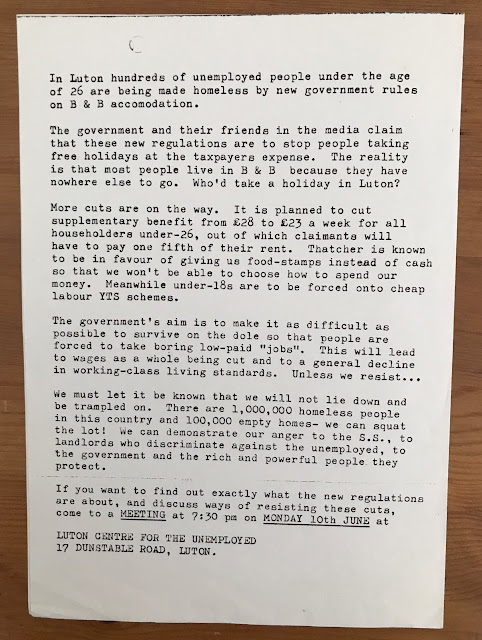Luton Henge Festival last month (29 July 2025) marked the opening of Luton Henge, a landscaped space featuring a circle of eight chalk stones that will serve as an outdoor venue for social and cultural events. The festival included music and dance, with Laura Misch playing her saxophone in the sunset. While I was there Bird Rave were doing their thing, dancing in feathered headdresses to classic rave tunes like 'Voodoo Ray' in bird inspired moves that they call 'dancefloor ornithology'. Anyway it was great fun.
 |
| Capoeira display |
The location by Marsh House at the Leagrave end of town is significant, located as it is near to the source of the River Lea and the ancient earthwork of Waulud's Bank. It is also a place linked to Luton's subcultural history. The green barn just about still stands where Crass, Poison Girls and Luton punk band UK Decay played in 1979, and where people also put on jazz funk dances in that period (as recalled by Fahim Qureshi, see below).
I missed Crass, but it was here around the same time that I saw my first punk gig. From 1977 to at least 1984 there was an annual late summer one day Marsh House Festival. 16 year old me cycled over in 1979 and saw UK Decay and Pneu Mania, as well as 'Stevie's band', a scratch band made up of members of both bands who did a version of YMCA. Also on the bill were local rock band Toad the Wet Sprocket, Arcadaz (jazz/funk band), and acoustic singers Clive Pig and Heinrich Steiner.
 |
| 1984 Marsh House Festival flyer |
Marsh House was originally a farm house for Marsh Farm - the land on which the Marsh Farm council estate was built in the 1960s. In the 1990s, Luton free party collective Exodus started off on this estate and Glenn Jenkins and other people who had been involved in Exodus helped save Marsh House after it was boarded up and threatened with demolition in the 2000s. It now acts as a hub for various community projects, including a music studio.
For me, Marsh House was primarily a place where I went to summer holiday open access playschemes as a kid, charging around the ramshackle adventure playground (getting temporarily banned for stone throwing), bouncing on inflatables and playing softball by the river. I now know that some of the people who ran those playschemes were part of the local radical/alternative art scene some of whom had previously been involved with Luton Arts Lab and Reflex collective and went on to found the 33 arts centre which gave me a later education in experimental film and theatre- but that's another story.
 |
| Marsh House today |
Revoluton Arts who put on the Henge festival and are based at Marsh House are a descendent of these multi-faceted efforts to make things happen in my home town. They have done some interviews with people involved in some of these past projects, interesting to hear Fahim Qureshi (who I remember from the anti-racist movement of that time), Glenn Jenkins and Linda ‘Muddie’ Farrell (who worked on playschemes and helped set up 33) talk about the River Lea and its wildlife. Guess I followed that river down to London but never stop Luton.
 |
| Bird Rave |
As for the stone circle, I used to be cynical about contemporary efforts to recreate ancient looking monuments but I have seen the Brockley stone circle on Hilly Fields near where I live now become a focus in the south london park where it dates back only to 2000. At the end of the day the combination of stone, sky and people is as real today as it ever was. Build it they will come.
More Luton stuff:
How it all began (for me): a School Kid against the Nazis in Luton 1979/80






.jpg)

































